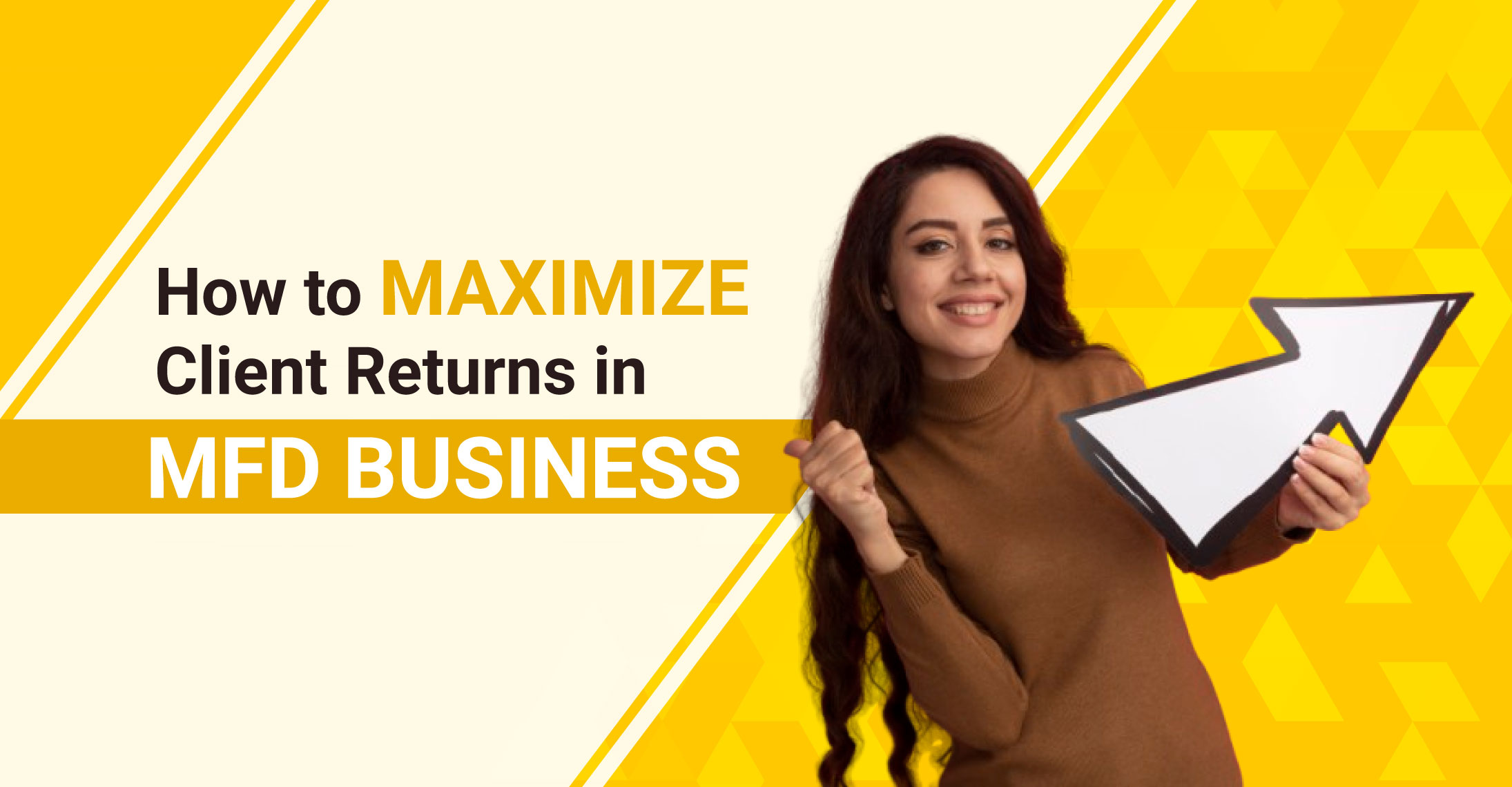
"I want to get the highest returns from my mutual funds."
As a mutual fund distributor, you might have heard this request from your clients or prospects.
And, in that scenario, you might have wondered how to make your clients happy without taking additional risks.
The portfolio should align with their risk-taking ability, risk tolerance, and the time left for the investment goal. Let us understand the three strategies through which you can help your clients maximize their returns in the Mutual Fund Distribution Business.
In MFD business, all funds don't perform in the same manner. Some funds might underperform their peers and benchmarks due to wrong investment bets or internal changes in the fund management team.
While not a single fund will be a top performer consistently across different time horizons, if a fund has consistently underperformed over a year or so, then you might consider looking into it.
So how do we figure out which fund is underperforming?
There is a method called quartile ranking. This breaks up funds into four different quartiles based on their performance over a certain time frame. The first quartile represents the top 25% of performing funds of a particular category, while the fourth quartile includes funds that have consistently underperformed.
If, as a distributor, you see a fund that has remained in the bottom quartile for over a year, you might consider exiting from the fund and investing in a fund that has been a consistent performer.
In addition to that, if you see that certain funds no longer serve any role in the current portfolio based on the client’s changing goals, you might look at removing those as well.
You might be aware of the core and satellite portfolio strategy.
The core portfolio consists of assets that form the bulk of the client’s portfolio. It will obviously depend on the client’s risk-taking capacity and time horizon.
For example, if someone can take moderate risk, their core portfolio might include large-cap funds or equity-oriented hybrid funds.
For someone nearing retirement and unable to take much risk, the core portfolio might consist of debt funds.
The satellite portfolio is separate from the core portfolio and aims to generate higher returns than the core portfolio by taking higher risks.
For example, if the core portfolio includes large-cap funds, you might suggest the investor allocate a small portion—maybe 5% or 10%—to mid-cap or thematic funds to enhance returns.
Similarly, a conservative investor whose core is mostly debt funds might consider allocating a small part to hybrid equity-oriented funds to get slightly higher returns.
So, if your client is looking for higher returns, you can consider using this strategy to enhance the overall portfolio performance.
The expense ratio is the fee mutual funds charge investors on an annual basis. It is important to share with your clients that the expense ratio is deducted from the returns the fund generates.
If two funds—Fund A and Fund B—both give similar pre-expense returns (say 12%), but Fund A has an expense ratio of 1% and Fund B has 0.75%, then Fund B is better, since both performed equally, but the investor would get 0.25% more than the other fund.
Over the long term, just as returns compound, costs also compound. So, if we can get similar-performing funds with a lower expense ratio, the investors can invest in those funds.
It's also important to compare fund returns within their category and not across the entire mutual fund universe.
Another way to minimize costs in the mf distribution business is by staying invested for the long term—ideally until the client reaches their financial needs and goals.
In the case of equity funds:
Long-term capital gains (LTCG) tax applies if you stay invested for over 12 months. It’s taxed at 12.5% beyond ₹1.25 lakh of annual gains.
Short-term capital gains (STCG) tax applies if you exit before 12 months. It’s taxed at 20%.
Staying invested helps avoid higher short-term taxes and also lets your portfolio benefit from compounding. Over time, the tax on long-term gains may not feel as significant compared to short-term taxation.
In the MFD business, you might get many client requests asking for high returns. However, it’s important to ensure that the portfolio is structured in a way that doesn't exceed their risk tolerance.
If you take higher risks to generate higher returns, but the investor can’t handle that risk emotionally or financially, it won’t help in the long run.
So, it’s crucial that any attempt to optimize returns is aligned with the investor’s risk profile, financial goals, and behaviour.